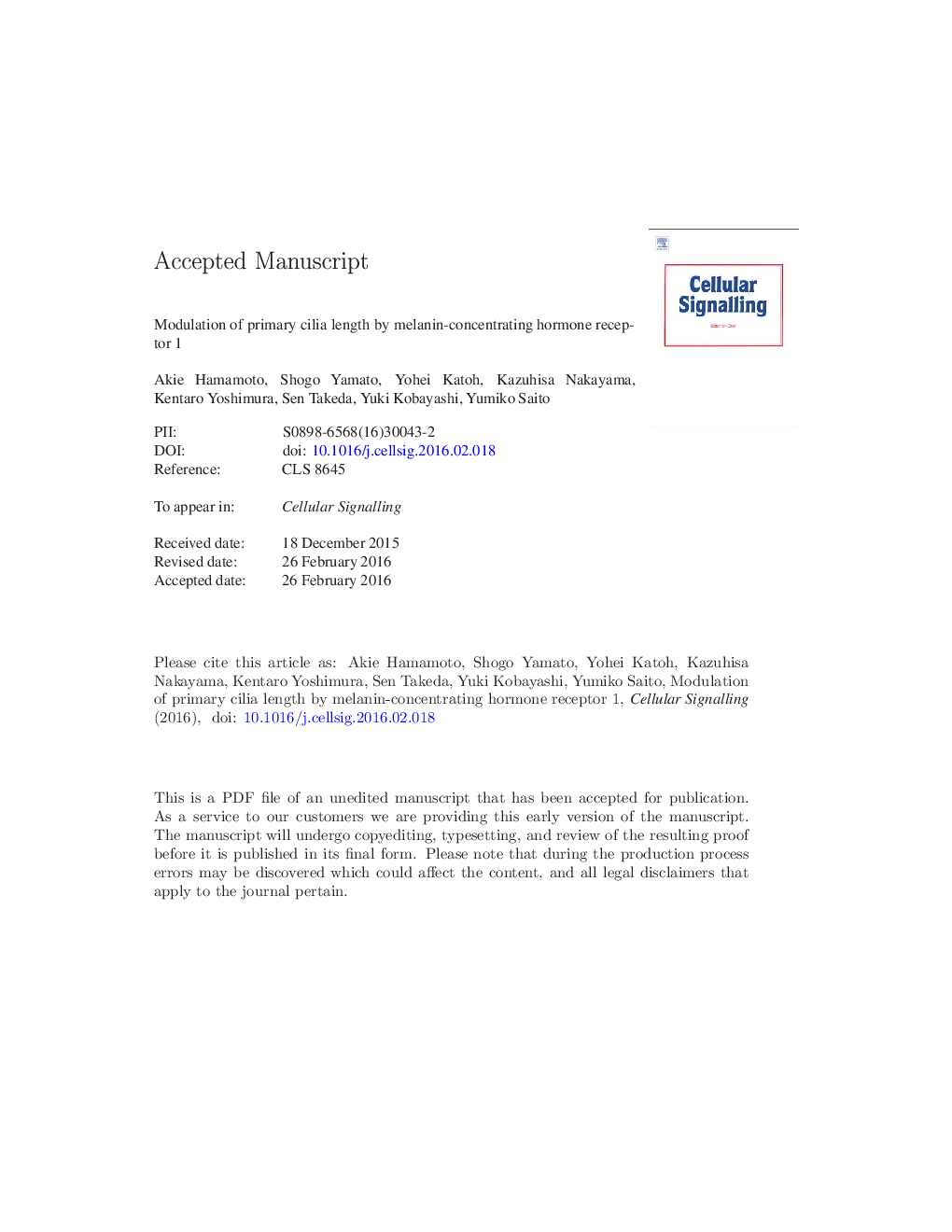| Article ID | Journal | Published Year | Pages | File Type |
|---|---|---|---|---|
| 10815130 | Cellular Signalling | 2016 | 54 Pages |
Abstract
Melanin-concentrating hormone (MCH) receptor 1 (MCHR1) is a class A G-protein-coupled receptor (GPCR). The MCH-MCHR1 system has been implicated in the regulation of feeding, emotional processing, and sleep in rodents. Recent work revealed that MCHR1 is selectively expressed in neuronal primary cilia of the central nervous system. Cilia have various chemosensory functions in many types of cell, and ciliary dysfunction is associated with ciliopathies such as polycystic kidney disease and obesity. Although dynamic modulation of neuronal cilia length is observed in obese mice, the functional interaction of neuronal ciliary GPCR and its endogenous ligand has not yet been elucidated. We report here that MCH treatment significantly reduced cilia length in hTERT-RPE1 cells (hRPE1 cells) transfected with MCHR1. Quantitative analyses indicated that MCH-induced cilia shortening progressed in a dose-dependent manner with an EC50 lower than 1Â nM when cells were treated for 6Â h. Although the assembly and disassembly of primary cilia are tightly coupled to the cell cycle, cell cycle reentry was not a determinant of MCH-induced cilia shortening. We confirmed that MCH elicited receptor internalization, Ca2Â + mobilization, ERK and Akt phosphorylation, and inhibition of cyclic AMP accumulation in MCHR1-expressing hRPE1 cells. Among these diverse pathways, we revealed that Gi/o-dependent Akt phosphorylation was an important component in the initial stage of MCH-induced cilia length shortening. Furthermore, induction of fewer cilia by Kif3A siRNA treatment significantly decreased the MCH-mediated phosphorylation of Akt, indicating the functional importance of the MCHR1-Akt pathway in primary cilia. Taken together, the present data suggest that the MCH-MCHR1 axis may modulate the sensitivity of cells to external environments by controlling the cilia length. Therefore, further characterization of MCHR1 as a ciliary GPCR will provide a potential molecular mechanism to link cilia length control with obesity.
Keywords
smoothened agonistPKCPTXGSK3βMCHPI3KionomycinSMOSAGEpacβARKctIFTMelanin-concentrating hormone receptorAcTubMCHRC-tailSomatostatin 14TSABBSPGE2pKaGPCRERKcyclic AMPcAMPG-protein-coupled receptorG-protein-coupled receptor (GPCR)Small interfering RNAsiRNAacetylated α-tubulinTrichostatin Aintraflagellar transportC-terminal tailAkt pathwaypertussis toxinBardet–Biedl syndromeSmoothenedphosphoinositide 3-kinasemelanin-concentrating hormoneMelanin-concentrating hormone (MCH)Primary ciliaG-proteinExchange protein directly activated by cAMPprotein kinase AProtein kinase CProstaglandin E2extracellular signal-regulated kinaseGlycogen synthase kinase 3β
Related Topics
Life Sciences
Biochemistry, Genetics and Molecular Biology
Biochemistry
Authors
Akie Hamamoto, Shogo Yamato, Yohei Katoh, Kazuhisa Nakayama, Kentaro Yoshimura, Sen Takeda, Yuki Kobayashi, Yumiko Saito,
